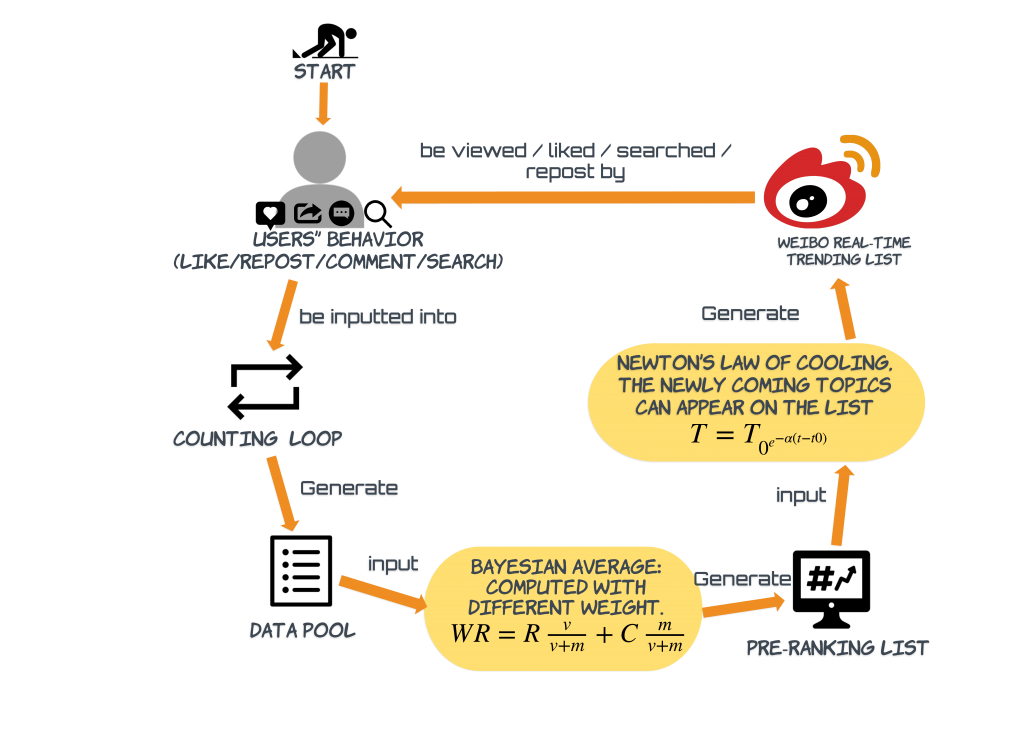Architecture

To be specific, the architecture explains the technical mechanism of how Weibo Real-time Trending List is shaped and maintained.
Firstly, as users repost, make comments, searching for, and give “like” to certain topics in the front-end, the data will be collected and input into the counting loop. Through the loop work, the number of reposting, liking, searching, and commenting under each topic separately will be recorded without weight, after which it forms a list of topics without order in the data pool.
And then, the data will be inputted into Bayesian Average formula:

in which the number got from the last step will be computed with different weight. Here the formula calculates the popularity (“WR”), or physically, something like thermal, of each topic with certain weights. “v” and “m” represent different proportions of each element in the whole group, and the “v/(v+m)” and “m/(v+m)” stands for different weight for each element. “R” and “C” represent the amount of each element that needs to be calculated with weight. For example, if we want to calculate the popularity of topic A with 40 comments and 60 reposts, and we set the weight of the two elements as 3:1 (comment: repost) as we think the number of comments is a more leading figure than repost when measuring the popularity of a topic. Then, for “R” is the number of comments, “C” is the amount of reposts, “v” is the proportion of comments in this two factors, and “m” is the proportion of repost, we can get WR=40[3/(3+1)]+60[1/(3+1)]=45, which is the popularity of topic A. in other words, the popularity of each topic on Weibo is measured as the sum of all elements together, including repost, comments, searching frequency, and like. However, the specific weight of each element on Weibo, set by Sina Company, is not an open source, so we can only get to know the model.
Then, the results of the Bayesian Average formula will be presented as a pre-ranking list in descending sort that needs the final adjust based on post time. It follows the concept of Newton’s Law of Cooling:
![]()
so that the newly coming topics can have the chance appearing on the List. It states that “the rate of change of the temperature of an object is proportional to the difference between its own temperature and the ambient temperature (i.e. the temperature of its surroundings)” (The UBC Calculus Online Homepage). Here “t” is the time now, “t0” is when the calculation began, so “t-t0” stands for how long is it since the topic was posted. And, “T” and “T0” are the temperature at a time “t” and “t0” respectively. The results show an exponential function. When applying it to the Weibo real-time trending list, it simply means that the longer it appears on the list because it may have a higher score of popularity as mentioned above, the more likely it will move down to the bottom of the list.
So far, Weibo Realtime Trending List has basically got its form, but that is not the end. As it is viewed, reposted, liked and searched by the users constantly, this loop will keep running again and again.
Source:
Other different equations. (n.d.) Retrieved May 1, 2019, from https://www.ugrad.math.ubc.ca/coursedoc/math100/notes/diffeqs/cool.html
